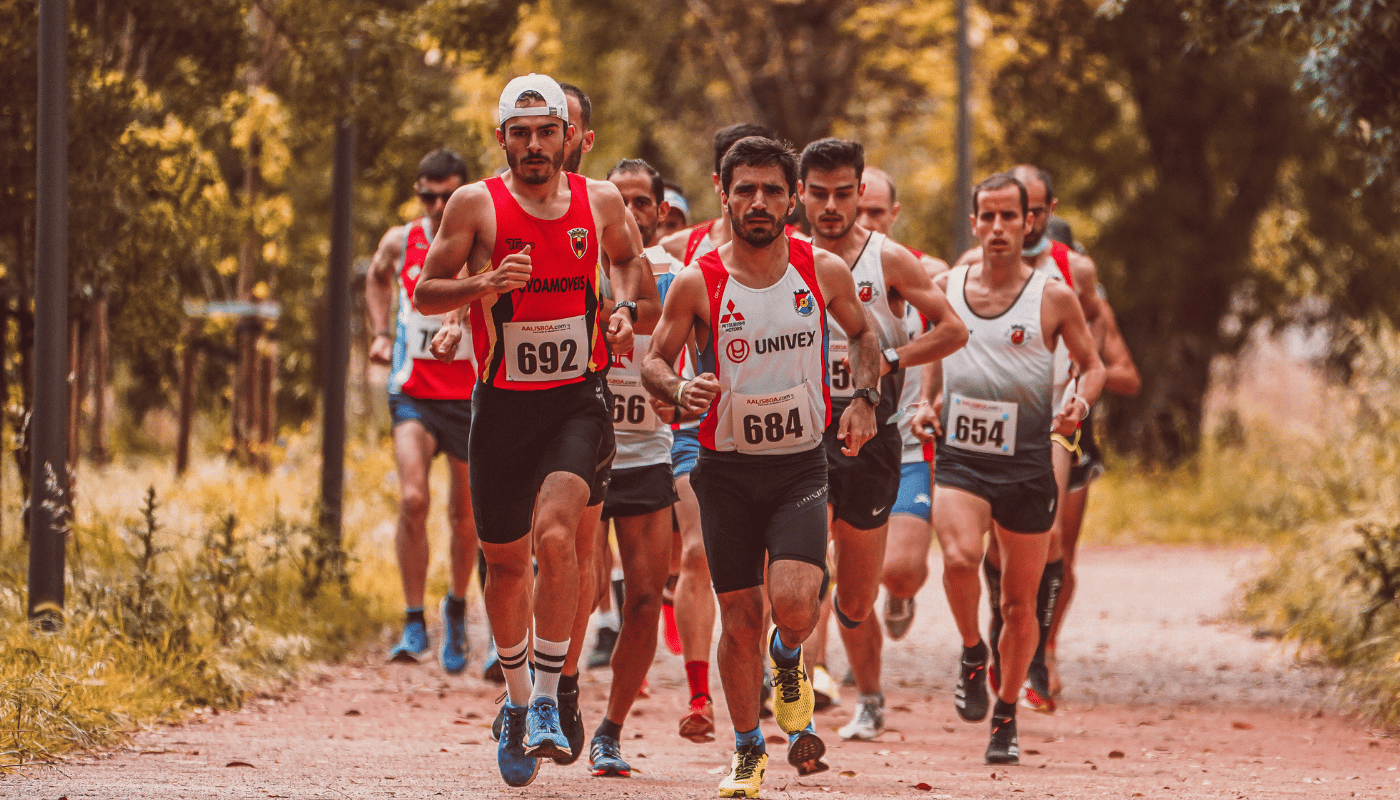Preparing for a half marathon involves more than just logging miles and building endurance. One critical aspect of race preparation is carb loading, a nutritional strategy that can significantly enhance your performance. Carb loading, short for carbohydrate loading, focuses on maximizing your body’s glycogen stores to ensure you have ample energy during the race. This guide provides a comprehensive overview of how to effectively carb load before a half marathon, ensuring you approach race day with the energy and confidence needed to achieve your best performance.
Understanding Carb Loading
Carb loading is a technique used by endurance athletes to increase the amount of glycogen stored in their muscles and liver. Glycogen is the primary fuel source during prolonged exercise, such as running a half marathon. By maximizing glycogen stores, carb loading helps delay the onset of fatigue, allowing you to maintain a steady pace throughout the race.
The process of carb loading typically begins about three days before the race. During this period, you gradually increase your carbohydrate intake while simultaneously reducing your training intensity. This combination allows your muscles to store more glycogen without depleting your energy reserves through strenuous workouts. Understanding the science behind carb loading can help you implement it effectively and reap the full benefits on race day.
When to Start Carb Loading
Timing is crucial when it comes to carb loading. The optimal window to begin increasing your carbohydrate intake is approximately three days before the race. Starting earlier can lead to unnecessary weight gain and potential digestive discomfort, while starting later may not provide enough time for your body to fully replenish glycogen stores.
During these three days, focus on consuming carbohydrate-rich foods while maintaining a balanced diet. It’s also essential to taper your training during this period, reducing both the distance and intensity of your runs. This approach ensures that your energy stores are maximized without being depleted by intense exercise. Proper timing of carb loading sets the foundation for a successful and energy-efficient race.
What to Eat: Carb-Loading Foods
Choosing the right foods is essential for effective carb loading. Opt for carbohydrate-rich foods that are easy to digest and provide sustained energy. Incorporating a variety of these foods into your diet will help maximize your glycogen stores and ensure you have the energy needed to perform at your best. Here is a list of excellent carb-loading options:
- Whole Grains: Brown rice, quinoa, and whole wheat bread are excellent sources of complex carbohydrates.
- Pasta: A staple for many runners due to its high carbohydrate content and versatility in meals.
- Potatoes: Both white and sweet potatoes are great options that provide carbohydrates and essential nutrients.
- Fruits: Bananas, apples, and berries offer natural sugars along with vitamins and minerals.
- Vegetables: Starchy vegetables like corn and peas are good sources of carbohydrates.
- Legumes: Beans and lentils provide carbohydrates and protein, supporting both energy and muscle repair.
- Sports Drinks and Gels: Useful for additional quick carbohydrates, especially closer to race day.
Incorporating these foods into your meals and snacks during the carb-loading phase will help ensure that your glycogen stores are fully replenished, providing you with the sustained energy required for the half marathon.
Meal Planning for Carb Loading
Effective meal planning is a cornerstone of successful carb loading. By organizing your meals in advance, you can ensure that you meet your carbohydrate needs without overcomplicating your diet. A structured meal plan helps maintain consistency and prevents last-minute stress, allowing you to focus on other aspects of race preparation.
Start your day with a carbohydrate-rich breakfast, such as oatmeal topped with banana and honey or whole grain toast with jam. For lunch, opt for a turkey and cheese sandwich on whole wheat bread accompanied by a side of fruit salad. Dinner can include a hearty meal like spaghetti with marinara sauce and garlic bread, along with a bowl of mixed vegetables.
In between meals, healthy snacks like granola bars, yogurt with berries, or rice cakes can help you maintain your carbohydrate intake without feeling overly full. By organizing your meals and snacks around carbohydrate-rich foods, you can effectively support your carb-loading goals and ensure you have the necessary energy reserves for race day.
Sample Carb Loading Schedule
Creating a schedule can help you stay organized and ensure you are consistently increasing your carbohydrate intake. Below is a sample carb-loading plan for the three days leading up to a half marathon:
| Day | Breakfast | Lunch | Dinner | Snacks |
| Three Days Before | Pancakes with syrup | Chicken sandwich on whole wheat | Pasta with tomato sauce | Fruit, granola bars |
| Two Days Before | Bagel with honey | Rice bowl with vegetables | Baked potatoes with toppings | Yogurt, rice cakes |
| One Day Before | Cereal with milk | Turkey wrap with cheese | Stir-fried noodles | Smoothies, bananas |
This schedule provides a balanced approach to carb loading, ensuring you consume a variety of carbohydrate sources throughout the day. Adjust the portions based on your individual needs and preferences to maximize the effectiveness of your carb-loading strategy. Consistency is key, so stick to the plan as closely as possible to achieve optimal glycogen storage.
Hydration During Carb Loading
Proper hydration is as important as increasing your carbohydrate intake. Water plays a crucial role in the storage of glycogen, and staying hydrated helps maintain your energy levels. Aim to drink at least 8-10 glasses of water each day during the carb-loading phase. Additionally, include electrolyte-rich beverages like sports drinks to replenish minerals lost through sweat.
Hydration supports overall bodily functions and ensures that your muscles can efficiently store glycogen. It also helps prevent dehydration-related fatigue and cramps during the race. Make hydration a key part of your carb-loading routine to optimize your performance and maintain your energy levels throughout the half marathon.
Avoiding Common Mistakes
While carb loading can significantly enhance your performance, it’s important to avoid common mistakes that can undermine its benefits. Being aware of these pitfalls can help you implement carb loading more effectively and comfortably:
- Overeating: Consuming too many carbohydrates can lead to digestive issues and unnecessary weight gain. Stick to your planned portions to avoid feeling sluggish.
- Neglecting Protein and Fats: Although the focus is on carbohydrates, maintaining a balanced diet with adequate protein and healthy fats is still important for overall health and muscle repair.
- Trying New Foods: Avoid experimenting with new foods during the carb-loading phase to prevent unexpected gastrointestinal problems. Stick to familiar foods that you know agree with your system.
- Ignoring Portion Sizes: Even healthy carbohydrates can become problematic in large quantities. Pay attention to serving sizes to ensure you’re eating enough without overdoing it.
By being mindful of these common mistakes, you can make your carb-loading phase more effective and comfortable, setting yourself up for a successful half marathon.
Benefits of Carb Loading
Carb loading offers several benefits that can enhance your half marathon performance. Understanding these benefits can help you appreciate the importance of this nutritional strategy and motivate you to implement it effectively:
- Increased Glycogen Stores: More energy available for your muscles delays fatigue and allows you to maintain a steady pace.
- Improved Endurance: Better stamina helps you keep going strong throughout the race, especially in the later stages.
- Enhanced Recovery: Faster replenishment of energy stores post-race aids in muscle recovery and reduces soreness.
- Mental Preparedness: Knowing you have ample energy can boost your confidence and mental focus, helping you tackle the race with a positive mindset.
These benefits collectively contribute to a more efficient and enjoyable racing experience, allowing you to perform at your best.
Adjusting Carb Loading for Individual Needs
Every runner is different, and carb loading should be tailored to your specific needs and preferences. Factors such as your metabolism, training intensity, and dietary restrictions can influence how you approach carb loading. It’s important to experiment during your training to find what works best for you.
For example, if you have a sensitive stomach, you might prefer smaller, more frequent meals rather than large ones. Alternatively, if you train at high intensities, you may require a higher carbohydrate intake to support your energy needs. Listening to your body and making adjustments based on your experiences can lead to the most effective carb-loading strategy.
Additionally, consider any dietary restrictions or food allergies you may have. Ensuring that your carb-loading plan accommodates your unique dietary needs will help you avoid discomfort and ensure that you are fueling your body appropriately for the race.
Carb Loading and Training
While carb loading focuses on nutrition, it’s also important to align it with your training regimen. Tapering your training during the carb-loading phase helps ensure that your energy stores are not depleted by intense workouts. A typical taper involves reducing your running distance and intensity in the days leading up to the race, allowing your body to rest and store glycogen effectively.
By combining carb loading with a proper taper, you create an optimal environment for your body to maximize glycogen storage and recover from training, setting you up for peak performance on race day. This synergy between nutrition and training is essential for achieving the best possible results in your half marathon.
Post-Race Recovery
Carb loading doesn’t stop once the race is over. Consuming carbohydrates after your half marathon aids in replenishing glycogen stores and supports muscle recovery. Pairing carbohydrates with protein can enhance the recovery process by repairing muscle tissues and restoring energy levels more efficiently.
Post-race nutrition is crucial for minimizing muscle soreness and preparing your body for future training sessions. Incorporate a balanced meal with carbohydrates and protein within an hour after finishing the race to kickstart your recovery. Proper post-race nutrition ensures that your body recovers effectively, allowing you to bounce back quickly and maintain your training momentum.
Carb Loading Myths Debunked
There are several misconceptions about carb loading that can confuse runners. Understanding the facts can help you implement carb loading correctly and avoid potential pitfalls:
Myth 1: Carb Loading Means Eating Only Carbohydrates
Carb loading involves increasing carbohydrate intake but does not require eliminating other macronutrients. A balanced diet with proteins and fats is still important for overall health and performance.
Myth 2: You Should Start Carb Loading a Week Before the Race
Carb loading is most effective when started about three days before the race. Extending it to a week can lead to unnecessary calorie intake and potential weight gain.
Myth 3: Carb Loading is Only for Long Races
While carb loading is most beneficial for endurance events longer than 90 minutes, it can also enhance performance in a half marathon, which typically lasts around two hours.
By debunking these myths, you can approach carb loading with accurate information and implement it effectively to support your racing goals.
Personalizing Your Carb Loading Plan
Personalization is key to successful carb loading. Consider factors such as your dietary preferences, any food allergies, and how your body reacts to different types of carbohydrates. Some runners may prefer gluten-free options, while others might need to avoid lactose. Tailoring your carb-loading plan to your unique needs ensures comfort and effectiveness on race day.
For example, if you are lactose intolerant, choose lactose-free dairy products or plant-based alternatives. If you prefer low-fiber diets, focus on refined carbohydrates that are easier to digest. Personalizing your carb-loading plan helps you avoid gastrointestinal issues and ensures that you are fueling your body in a way that suits your individual needs.
Monitoring Your Progress
Keeping track of your carb-loading process can help you identify what works best for you. Maintain a food diary during the days leading up to the race, noting what you eat, how you feel, and any digestive issues. This information can be invaluable for making adjustments and optimizing your strategy for future races.
By monitoring your progress, you can fine-tune your carb-loading approach, ensuring that it aligns with your body’s responses and maximizes your performance. This proactive approach can help you avoid potential pitfalls and make informed decisions about your nutrition strategy.
Conclusion
Carb loading is a proven strategy to enhance endurance and performance in a half marathon. By understanding the principles of carb loading, planning your meals, and avoiding common mistakes, you can ensure that your energy stores are optimized for race day. Remember to personalize your approach based on your individual needs and preferences, and combine carb loading with proper hydration and training tapering for the best results. With effective carb loading, you’ll be well-prepared to tackle the half marathon with energy and confidence.






